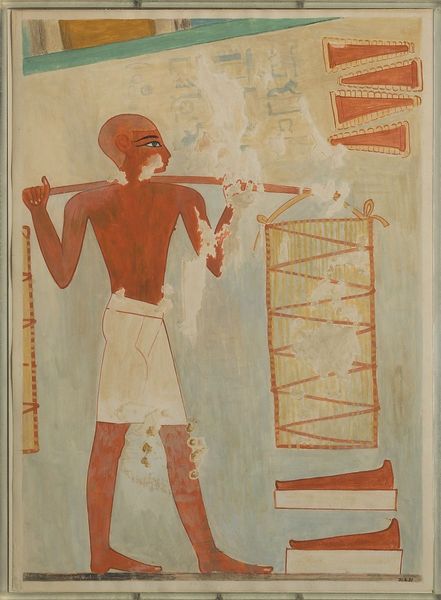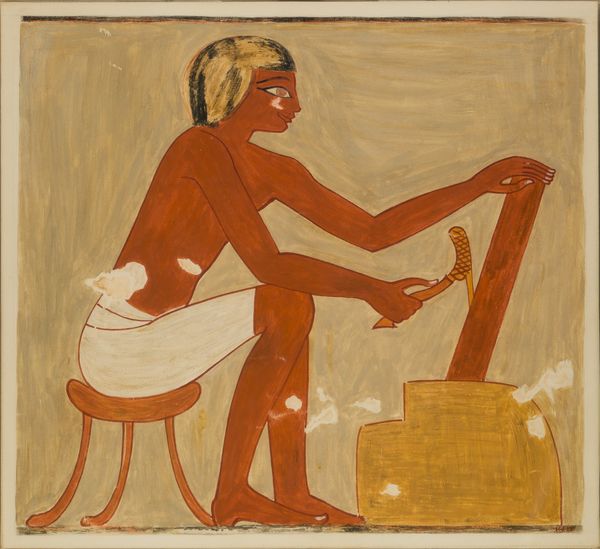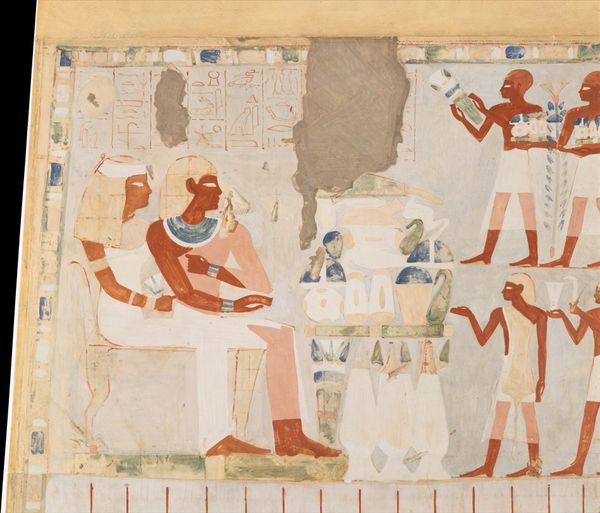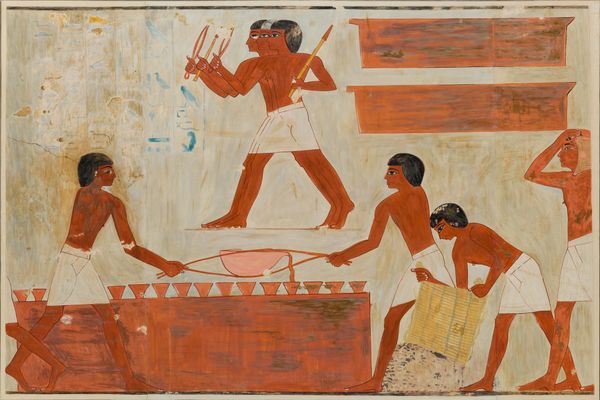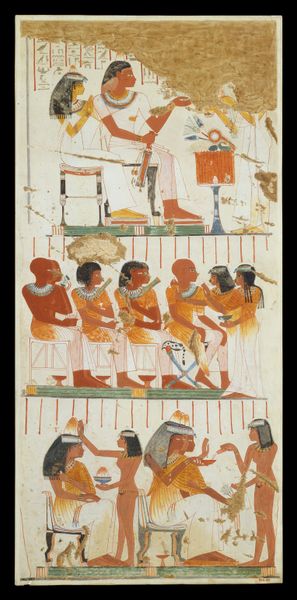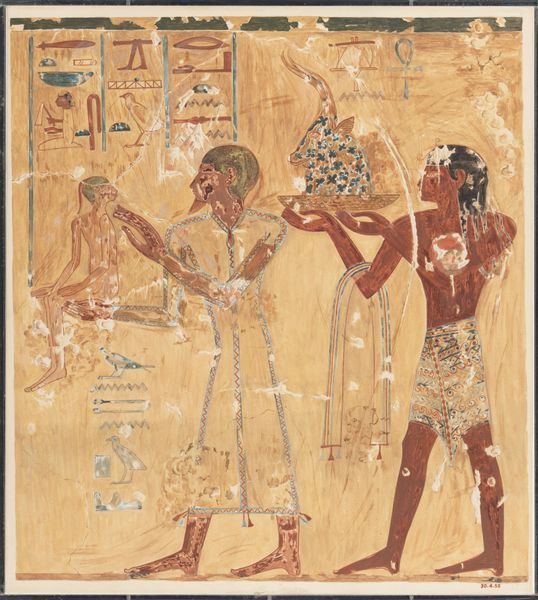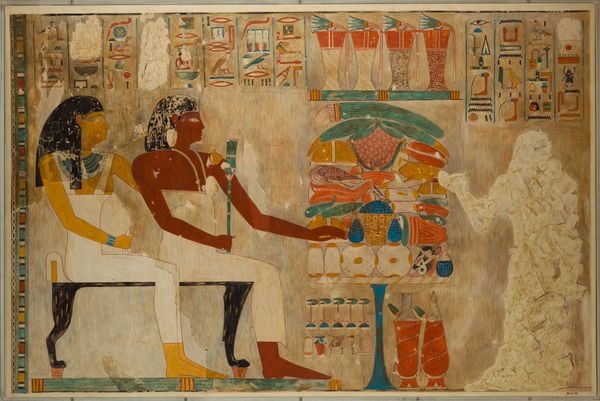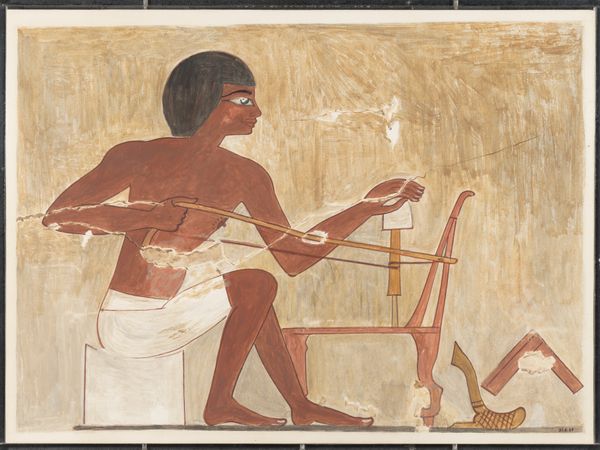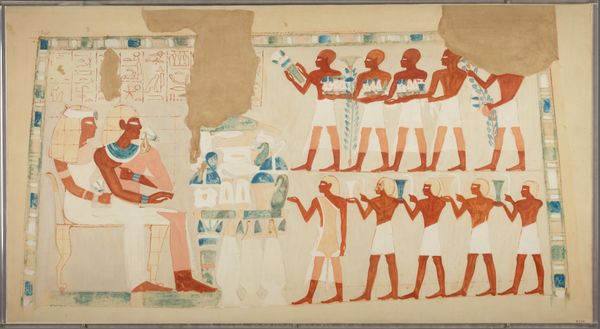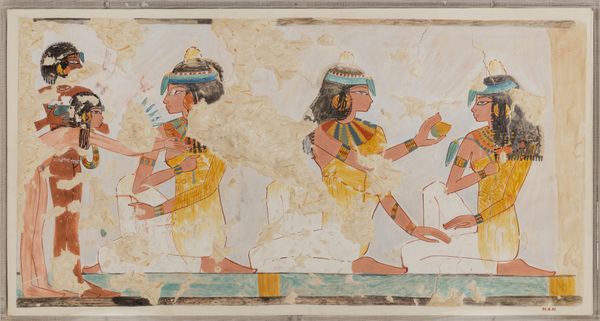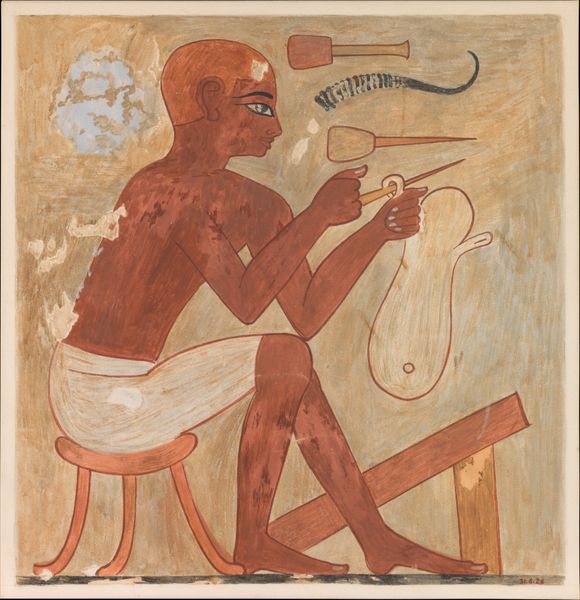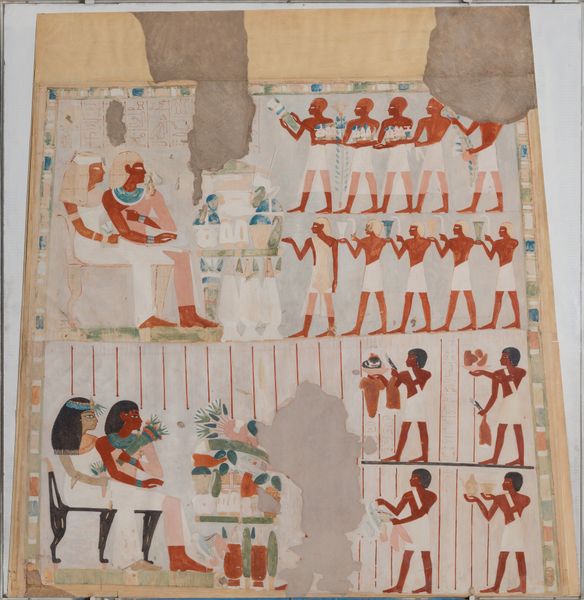
painting, watercolor
#
portrait
#
water colours
#
painting
#
ancient-egyptian-art
#
figuration
#
watercolor
#
egypt
#
ancient-mediterranean
#
men
#
line
#
history-painting
#
watercolor
Dimensions: facsimile: H. 28.8 × W. 31.7 cm (11 5/16 × 12 1/2 in.) scale 1:1 framed: 30.5 × 33 cm (12 × 13 in.)
Copyright: Public Domain
Curator: Standing before us is a section of the wall painting, "Man Before a False Door," taken from the Tomb of Nebamun. Dating back to around 1473 BC, this piece now resides at the Metropolitan Museum of Art. The medium here is watercolor. Editor: My immediate reaction is one of constrained energy. The man depicted has such deliberate posture, it gives a sense of formality but with a restrained kind of readiness to leap into action. Curator: Exactly. The rendering really points to labor and skill, and I wonder about the workforce engaged in creating these wall decorations in a tomb environment, given that their work ensures a person’s passage into afterlife. Consider also the resources needed: the pigments themselves and who controls those resources. Editor: The composition here is remarkable, this rigid pose against this ornamented wall. It screams about the constructed identity, the idealized version of this person destined for eternity. It brings to the foreground so many questions about class and representation, even visibility. Who has a door, or, rather, who has access? Curator: Access is absolutely a central question. And the "door" isn't just symbolic, it's quite literally produced through carefully chosen and combined materials, each contributing its own expense and symbolic significance. How does this physical, built environment speak to class? What are the ways we value the idea of craft versus industry? Editor: We can definitely interpret the symbolism behind this 'false door', that threshold that represents both limitation and passage between different states. But there’s a certain flattening of form that is, if not symbolic, at least very meaningful. Is the subject forced to adhere to a certain visual order, is the afterlife so bound in specific visuals? Curator: This adherence might point to a visual consistency within a community, a sense of shared expectations and norms around representing death and afterlife that serve to maintain order in their society. Editor: Viewing this artwork helps underscore how representation is almost always entangled with political and social order, wouldn't you agree? It's a reminder that artworks are not innocent bystanders. Curator: I think both our lines of inquiry give insight here; considering its means of production brings historical context into sharp relief. Editor: Yes, by intertwining historical context with materiality, we highlight those crucial narratives and cultural layers in ancient Egypt. Thank you for this rich discussion!
Comments
No comments
Be the first to comment and join the conversation on the ultimate creative platform.
